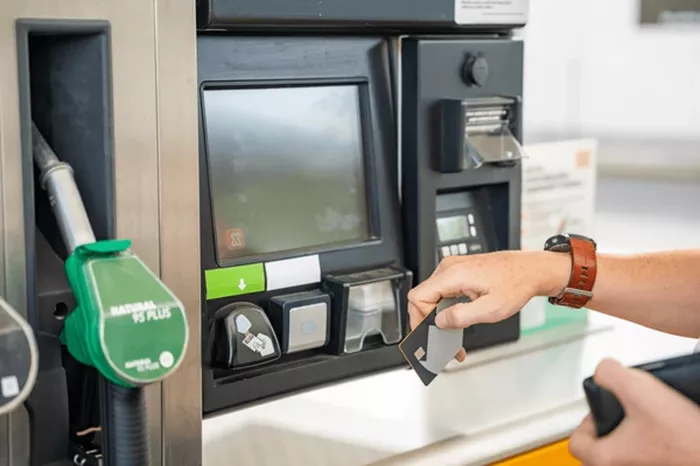Crude oil is one of the most important natural resources in the world. It is the raw material used to make many types of fuel, including gasoline, diesel, and jet fuel. Every day, millions of barrels of crude oil are processed in refineries around the world. One of the most common questions people ask is: how much gasoline can be made from one barrel of crude oil? The answer depends on many factors, such as the type of crude oil and the refining process used. This article will explain in detail how gasoline is produced from crude oil and how much gasoline is typically obtained from one barrel.
What Is A Barrel Of Crude Oil?
A barrel of crude oil is a standard measurement used in the oil industry. One barrel contains 42 gallons (159 liters) of crude oil. Crude oil itself is a mixture of different hydrocarbons. It is not useful in its natural form, so it must be refined to separate it into different products like gasoline, diesel, jet fuel, and other petroleum-based materials.
The Refining Process
Crude oil is processed in refineries to separate it into different fuels and products. The process involves several steps, including:
- Distillation: The crude oil is heated and separated into different components based on their boiling points.
- Cracking: Large hydrocarbon molecules are broken down into smaller ones to produce more gasoline and diesel.
- Reforming: Some low-quality fuel components are converted into high-octane gasoline.
- Blending: Different types of gasoline are mixed to meet market specifications.
Each of these steps helps maximize the amount of gasoline and other useful products that can be obtained from a barrel of crude oil.
How Much Gasoline Comes From One Barrel Of Crude Oil?
On average, a single barrel of crude oil (42 gallons) produces about 19 to 20 gallons of gasoline. This means that roughly 45% to 48% of a barrel of crude oil is turned into gasoline. However, the exact amount can vary based on several factors, including the type of crude oil and the refining technology used.
Other Products From A Barrel Of Crude Oil
Gasoline is not the only product that comes from crude oil. A barrel of crude also produces:
- Diesel fuel: About 11 to 12 gallons
- Jet fuel: About 4 gallons
- Liquefied petroleum gases (LPG): About 2 gallons
- Heavy fuel oil: About 1 to 2 gallons
- Other products: Asphalt, lubricants, petrochemicals, and other materials
These products are essential for transportation, manufacturing, and many other industries.
Factors That Affect Gasoline Yield
The amount of gasoline obtained from a barrel of crude oil depends on several factors, including:
1. Type of Crude Oil
- Light crude oil contains more gasoline components than heavy crude oil.
- Heavy crude oil requires more processing to produce gasoline.
2. Refining Technology
- Modern refineries use advanced techniques to maximize gasoline production.
- Older refineries may produce less gasoline from the same barrel of crude oil.
3. Market Demand
- Refineries adjust production based on market demand for gasoline, diesel, and other fuels.
- Seasonal changes also affect the amount of gasoline produced.
4. Government Regulations
- Environmental rules can impact refining processes.
- Some regions require specific gasoline blends, which can change production levels.
Why Gasoline Yield Varies By Country
Different countries have different refining capabilities and crude oil sources. For example:
- United States: Produces about 45% gasoline from a barrel due to advanced refining technology.
- Europe: Produces less gasoline and more diesel because of higher diesel demand.
- Middle East: Exports more crude oil and has refineries focused on producing a mix of products.
Efficiency Improvements In Refining
Refineries are constantly improving their processes to increase gasoline yield. Some improvements include:
- Hydrocracking: Breaking down heavy hydrocarbons to produce more gasoline.
- Catalytic Cracking: A refining process that increases gasoline production.
- Blending Strategies: Mixing different fuel types to improve efficiency.
Conclusion
A barrel of crude oil typically produces about 19 to 20 gallons of gasoline, along with other important products like diesel and jet fuel. The exact amount depends on the type of crude oil, refining technology, and market demand. As refining technology improves, refineries can extract more gasoline from each barrel.
FAQs
1. What can be made from 1 barrel of crude oil?
A single barrel of crude oil (about 42 gallons or 159 liters) can be refined into various products. On average, a barrel of crude oil yields:
Gasoline – About 19-20 gallons (used for cars and other vehicles)
Diesel fuel – Around 11-12 gallons (used for trucks, trains, and ships)
Jet fuel – About 4 gallons (used for airplanes)
Liquefied Petroleum Gas (LPG) – Around 2 gallons (used for heating and cooking)
Asphalt – Used for road construction and roofing materials
Lubricants – Used for machinery and automotive applications
Petrochemicals – Used to create plastics, synthetic rubber, detergents, and other industrial chemicals
The exact output depends on the refining process and the type of crude oil.
Is crude oil flammable?
Yes, crude oil is flammable, but its flammability depends on its composition. Lighter crude oils, which contain more volatile hydrocarbons, can ignite more easily. Heavier crude oils are less volatile and require higher temperatures to catch fire. However, all forms of crude oil pose fire hazards, especially when stored or transported in large quantities.
What is gasoline made of?
Gasoline is made from crude oil through a refining process called fractional distillation. This process separates different hydrocarbons based on their boiling points. Gasoline consists mainly of hydrocarbons (compounds of hydrogen and carbon), typically containing 4 to 12 carbon atoms per molecule. It also includes additives such as:
- Ethanol (to increase octane and reduce emissions)
- Detergents (to clean engine parts)
- Stabilizers (to prevent oxidation and degradation)
- Anti-knock agents (to prevent engine knocking and improve performance)

